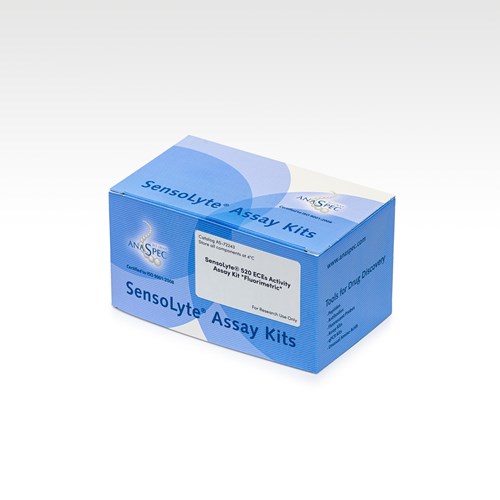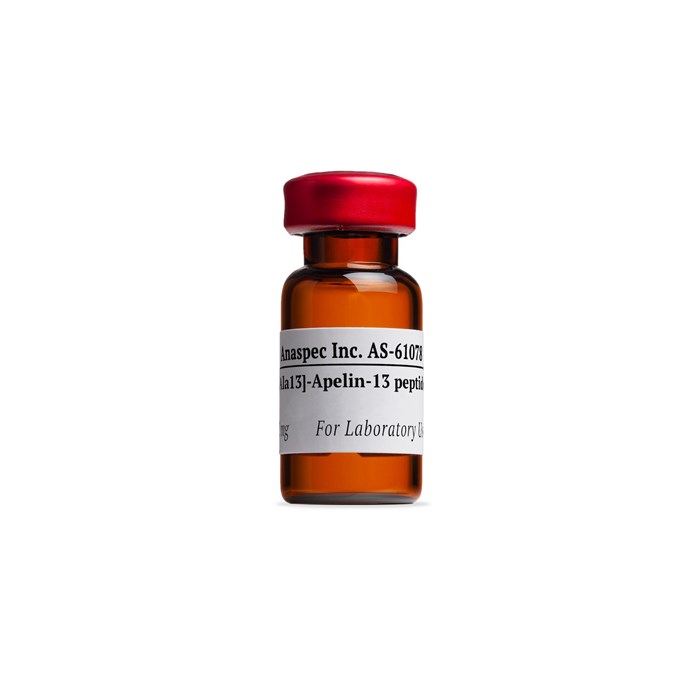[Ala13]-Apelin-13 - 1 mg
- Cat.Number : AS-61078
- Manufacturer Ref. :
-
Availability :
In stock
Alternative choices
Apelin is the endogenous ligand for the G-protein-coupled APJ receptor. It is produced as a pre-proprotein of 77 amino acids. Upon signal peptide cleavage, the proprotein of 55 amino acids may generate several active fragments: Apelin-36 (36 aa corresponding to the sequence 42-77), Apelin-17 (17 aa corresponding to the sequence 61-77) and Apelin-13 (13 aa corresponding to the sequence 65-77).
Apelin -13 is a vasoactive peptide and one of the most potent endogenous inotropic agents known. It is one of the active peptide fragments resulting from maturation of preproapelin. It is suggested that Apelin-13 could be a competitive agonist to the apelin receptor, which is a class A G-protein coupled receptor and is a putative target for treatment of cardiovascular and metabolic diseases. Apelin-13 may undergo a pyroglutamylation at its N-terminal glutamine residue.
Pyroglutamyl (pGlu) peptides may spontaneously form when either Glutamine (Q) or Glutamic acid (E) is located at the sequence N-terminus. The conversion of Q or E to pGlu is a natural occurrence and in general it is believed that the hydrophobic γ-lactam ring of pGlu may play a role in peptide stability against gastrointestinal proteases. Pyroglutamyl peptides are therefore considered a normal subset of such peptides and are included as part of the peptide purity during HPLC analysis.
Specifications
| Chemistry | |
| Sequence one letter code |
|
|---|---|
| Sequence three letter code |
|
| CAS registry number |
|
| Molecular Formula |
|
| Molecular Mass/ Weight |
|
| Modification | |
| Conjugation |
|
| Quantity & Purity | |
| Purity |
|
| Storage & stability | |
| Form |
|
| Storage Conditions |
|
| Activity | |
| Biomarker Target | |
| Research Area | |
| Sub-category Research Area | |
| Usage |
|
| Source | |
| Source / Species |
|
| Codes | |
| Code Nacres |
|
You may also be interested in the following product(s)



